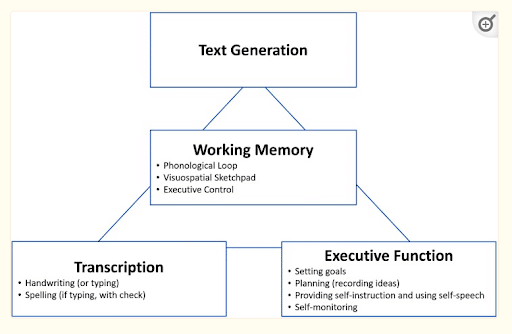Dyslexic students can face a lifetime of challenges that aren’t always understood. But when those around them know more about what they’re struggling with, they can reach their full potential. Dyslexia is a complex condition and having a diagnosis shouldn’t prevent someone from achieving success. But many students still face barriers from a lack of understanding and support.
To help educators become better educated about the key areas dyslexic students can struggle with, in this blog post, we present five key areas to review. But first, let’s define dyslexia and the issues that come with it.
What is Dyslexia?
Dyslexia is a neurodivergent disorder that is also defined as a Specific Learning Difference and defined as a disability in the UK. It has an early onset but is not always discovered early. It primarily affects the skills involved with word reading and spelling. And it affects people from all backgrounds and walks of life.
In the late 2000s, the UK government recognised how educators needed help to support dyslexic students. To address their lack of awareness, educationalist Sir Jim Rose carried out a study known as the ‘Rose Review’. Publishing his paper ‘Identifying and Teaching Children and Young People with Dyslexia and Literacy Difficulties’ in 2009, the British Dyslexia Association has since updated the Rose Review with its own definition of dyslexia.
Up to 80% of students leave school undiagnosed, leaving them at an educational disadvantage to their peers. Studies also show 40% of dyslexic students achieve a 2.1 or above at university, which is far lower than 52% of non-dyslexic students. Plus, dyslexic students are at a greater risk of dropping out of Higher Education than their non-dyslexic peers. Despite the myths, dyslexia does not relate to intelligence levels. And with the correct level of support to close the achievement gap, they can reach their full academic potential.
5 Things Dyslexic Students May Need Support With
To help educators offer the most appropriate support, here are five areas that dyslexic students may struggle with.
1. Producing Written Texts
People with dyslexia find it harder to encode, retain, and access phonological information. Good writing depends on encoding phonological information or recognising the way words sound as they write or type. And to produce a piece of writing, a person’s brain must go through various stages. Herbert, M., Kearns, D. M., et al (2018) represent this process through a pictoral pyramid structure.

This model reveals how producing a written text relies on the use of working memory, planning and setting goals, and handwriting/typing and spelling abilities. And having dyslexia may result in a student struggling in many of these areas, specifically working memory and transcription. This usually results in a need for more time than their peers to produce written work.
2. Reversing Letters and Numbers
Dyslexic students can sometimes write letters and numbers in reverse order. In practice, a ‘d’ may be written as a ‘p’ or even as a ‘b’. And in a similar way to words, they can sometimes write numbers in mirror images or upside down.
Students who show these traits may need more time to make adjustments to their final drafts. But with acceptance of their condition, senior staff and educators can help dyslexic students to produce work that reflects their abilities and makes allowances for incidences of reversals.
3. Extracting Information While Reading
Some reports suggest dyslexic students may need more time to read. And that this may be, in part, because dyslexic readers find it harder to process semantic and syntactic words. Dyslexic students can also struggle to pull out information as they read it, which can slow their reading process down further.
University leaders can help dyslexic students overcome this by allowing them more time to process what they read. They can also rely on Caption.Ed for help through its customised dictionary feature, which can decode complex terminology. This can enable students to confirm specific terminology as they read it and help them to understand the roots of the words.

4. Listening to Lectures and Taking Notes at the Same Time
Students with dyslexia may struggle to take notes while listening to lectures or seminars. And it’s the process of capturing spoken words that can take them longer than others to do. Further studies suggest dyslexic students will rely on compensatory strategies to take notes during lectures. And these include printing out presentations before a lecture and tape-recording lectures to listen back to them.
But this is where Caption.Ed is perfect. Students can use it to add captions to live and pre-recorded lectures and then receive a transcription. And this avoids needing to listen to lectures and take notes at the same time. But also, dyslexic students can add notes and highlight the most important aspects to their transcriptions.
5. Relying on Verbal Short-Term Memory
The capacity for Verbal Short-Term Memory (STM) is often reduced in dyslexic students. This contrasts with non-dyslexic students, who can easily rely on STM function to activate phonological and graphemic information, i.e. how words sound and look.
As explained in point 1, struggling with working memory or Verbal Short-Term Memory can leave dyslexic students at a disadvantage to their peers. But when they engage with captioning tools like Caption.Ed, they can find it easier to manage STM. By providing accurate transcripts of lectures and seminars, students can refer to them again and again. And through repeated exposure, they can boost their short-term memory and improve retention.
Leaders Should Leverage Caption.Ed to Help Dyslexic Students Achieve their Potential
Several myths surround dyslexia. And it’s often thought to reflect ability and academic potential. But the success of people who have dyslexia such as Stephen Hawking, Richard Branson, Keira Knightley, and our very own trio of co-founders proves very much otherwise.
With awareness of the problems and the right tools to help, educators can ensure dyslexic students achieve their full potential. And the best tool to help them do this is Caption.Ed.
With an average word error rate of 3% (compared to 4% and 12% from other providers), Caption.Ed is accurate, dynamic, and reliable. And with its customised dictionary and transcription feature, it can transform outcomes for dyslexic students.
Contact our team today for your free trial of Caption.Ed and check for yourself how it can support you and your students.


